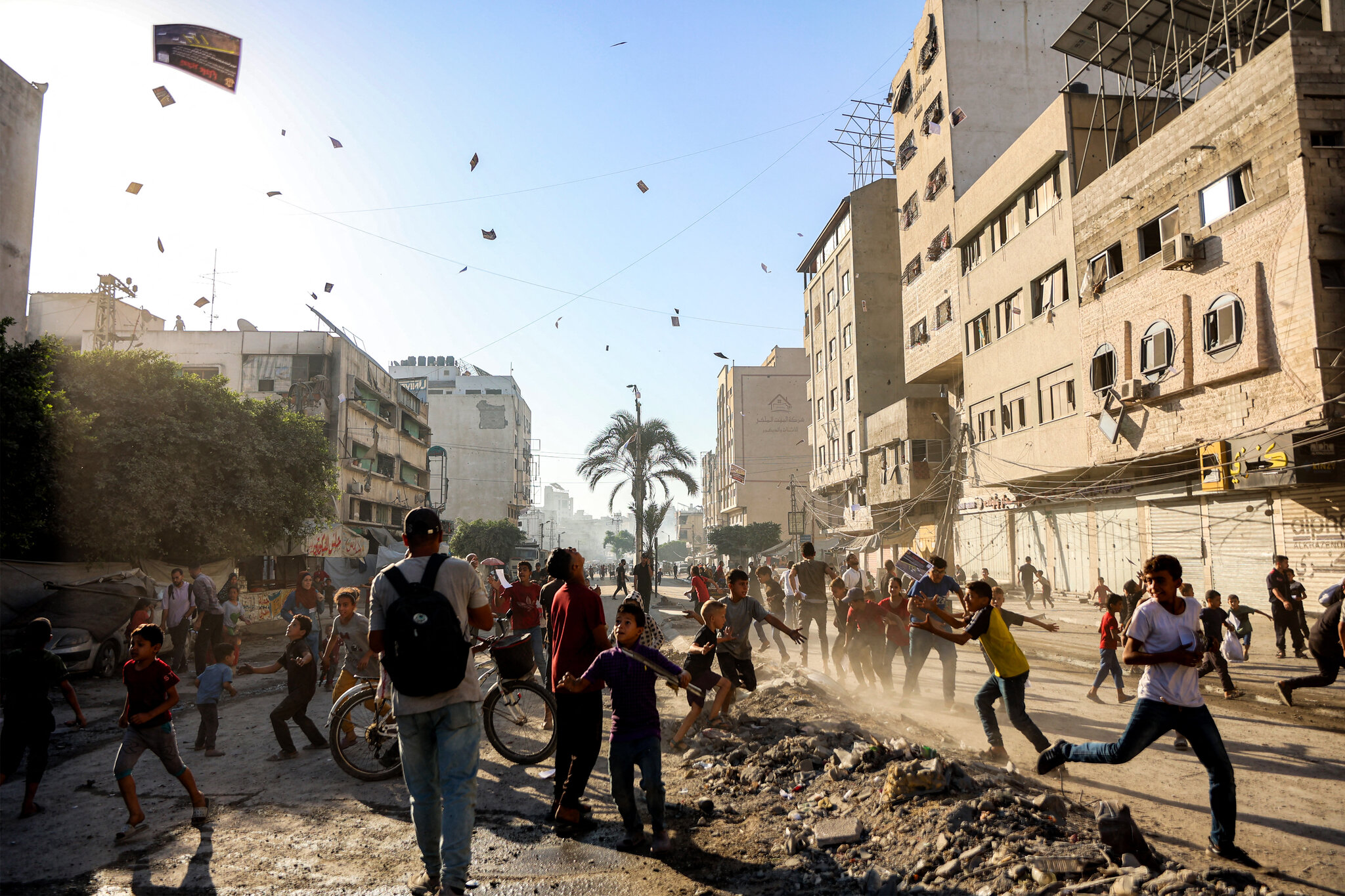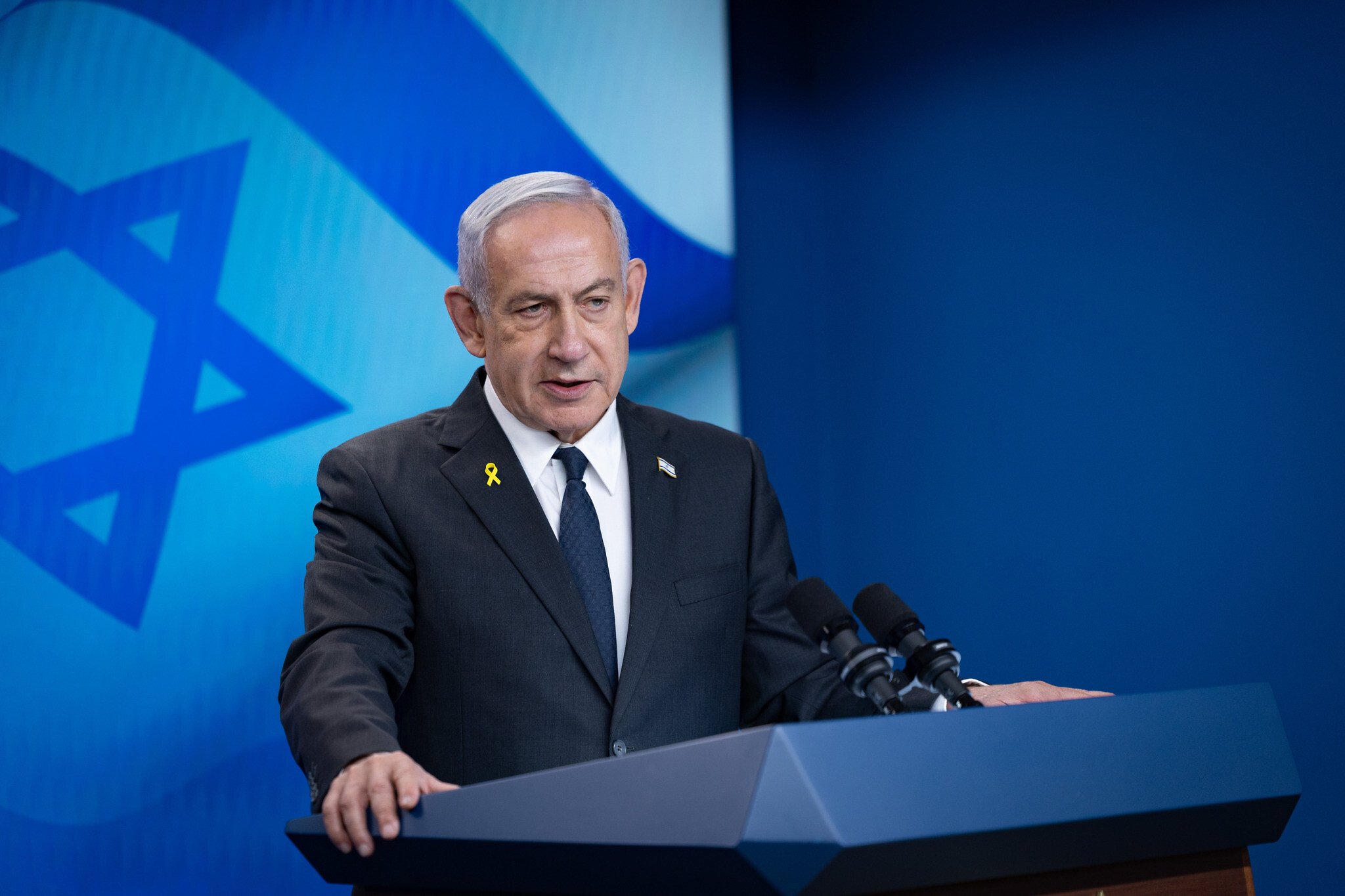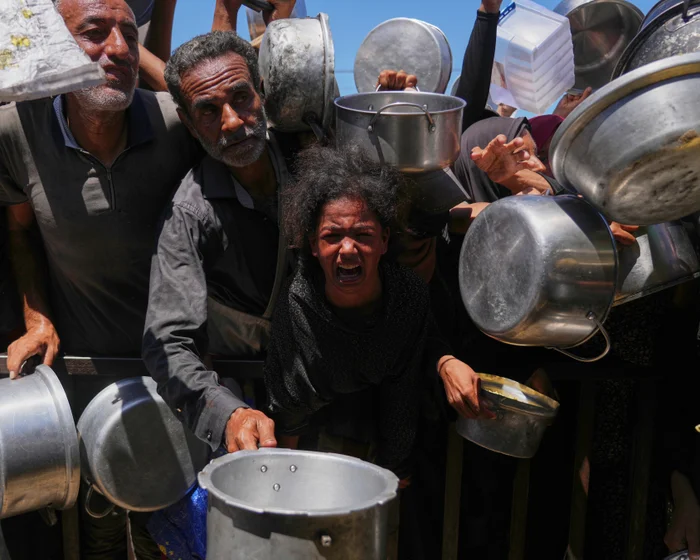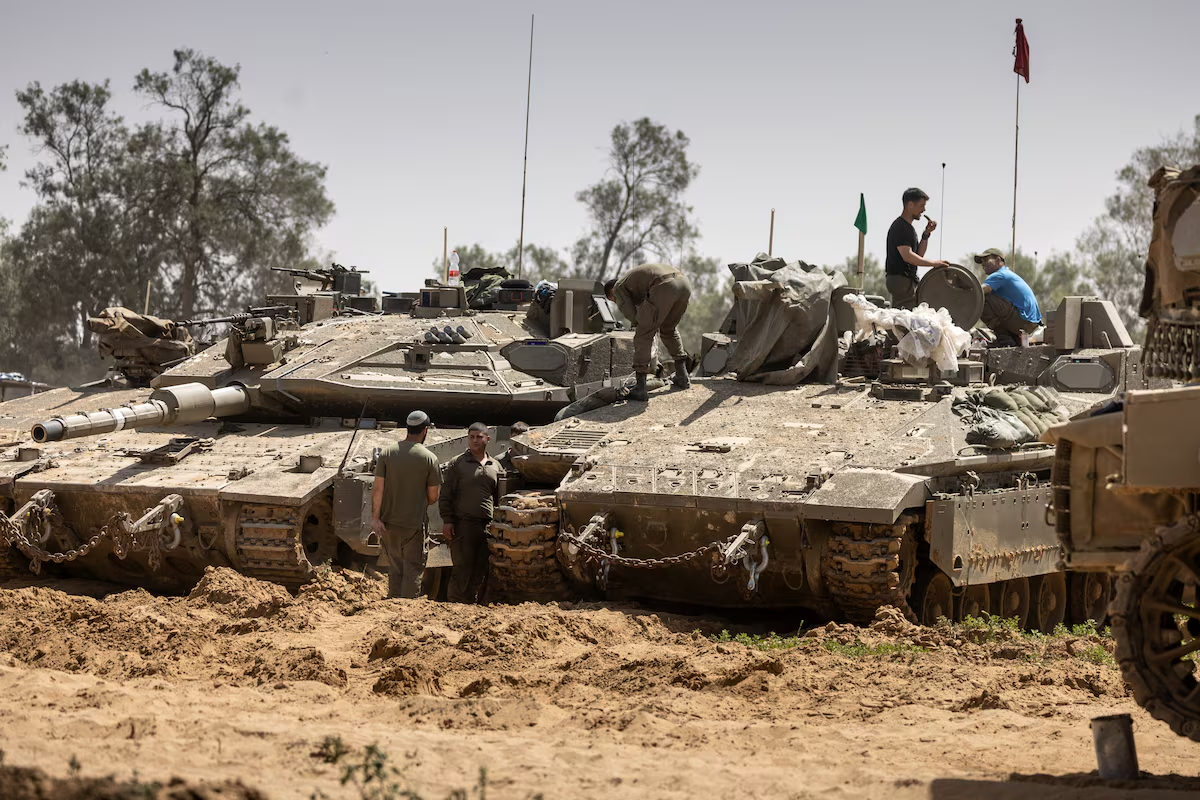On September 9, 2025, Gaza City’s skies filled with leaflets as the Israeli military issued urgent evacuation orders, warning residents to flee south to avoid a looming offensive aimed at dismantling Hamas. Videos captured children scrambling to collect the fluttering papers amid rubble, a haunting image of a city already scarred by nearly two years of war. With up to one million Palestinians sheltering in Gaza City, the orders sparked panic, confusion, and despair, as many faced the impossible choice of fleeing to overcrowded, unsafe areas or risking death by staying. This article explores the human toll, geopolitical context, and humanitarian crisis triggered by the evacuation orders, drawing on firsthand accounts and expert insights to paint a vivid picture of a region in turmoil.
The Evacuation Orders: A City Under Siege
The Israeli Defense Forces (IDF) dropped thousands of leaflets over Gaza City, urging residents to evacuate to the al-Mawasi “humanitarian zone” in southern Gaza. The orders, coupled with social media posts from IDF spokesman Avichay Adraee, warned of a “mighty hurricane” to defeat Hamas, signaling a full-scale ground offensive. For residents like Nivin Imad al-Din, a mother of five, the leaflets marked the start of a desperate, costly journey south, while others, like Ibrahim al-Barbari, vowed to stay, believing nowhere in Gaza is safe.
A History of Displacement
Gaza’s 2.2 million residents have faced repeated displacement since the war began on October 7, 2023, following Hamas’s attack on Israel, which killed 1,200 people and took 251 hostages. The IDF’s campaign has killed over 64,605 Palestinians, according to Gaza’s health ministry, leveling neighborhoods and triggering famine in parts of the city. The September 2025 evacuation orders echo earlier calls, like those in October 2023, which displaced 1.1 million people, often compared to the 1948 Nakba.
The Leaflets: A Message of Fear
The leaflets, featuring maps and QR codes, instructed residents to use the al-Rashid coastal road to flee south. Many, weakened by starvation or lacking internet access, couldn’t comply, while others faced exorbitant transport costs—up to 3,500 shekels (£735) for a ride to Khan Younis. The orders, described by Hamas as “forced displacement,” deepened fears of permanent exile.
The Human Cost: Stories of Survival
For Gaza City’s residents, the evacuation orders meant abandoning homes, memories, and livelihoods. Lina al-Maghrebi, a 32-year-old mother of three, sold her jewelry to afford a tent in the south, enduring a 10-hour journey through congested roads under airstrike threats. Others, like Montaser Bahja, a former schoolteacher, stayed, citing the south’s dangers and unaffordable costs, saying, “Death would be more merciful than what we’re living through.”
A Personal Reflection on Loss
I’ve never been to Gaza, but I’ve felt the weight of displacement through stories from friends who’ve fled conflict zones. The idea of packing your life into a bag, knowing you might never return, is gut-wrenching. For Gazans like Enas Tantesh, whose family celebrated her sister’s birthday amid falling leaflets, the pain of leaving home again—after surviving multiple displacements—feels like a betrayal of hope.
The Plight of the Vulnerable
Displaced cancer patients in tented camps, like Bajess al-Khaldi, expressed despair, saying, “There’s no place left, not in the south, nor the north, nothing.” Hospitals like Al Shifa and Al Ahli refused to evacuate, prioritizing patients despite bombardment risks. The Palestinian Red Crescent reported residents trapped by intense bombing, unable to flee.
The Geopolitical Context: A War Without End
Israel’s offensive, dubbed “Operation Gideon’s Chariots II,” aims to crush Hamas’s remaining 2,000–3,000 fighters in Gaza City, which it calls the group’s last stronghold. Prime Minister Benjamin Netanyahu, rejecting ceasefire proposals, vowed to seize the city after talks collapsed in July 2025. However, international critics, including the UN, warn that the assault risks “genocide,” with a UN commission report on September 17, 2025, accusing Israel of committing genocidal acts.
Hamas’s Role and Response
Hamas, claiming responsibility for a Jerusalem shooting that killed six on September 8, 2025, accused Israel of using the evacuation as a pretext for “forced displacement.” The group’s refusal to release the remaining 48 hostages—20 believed alive—has fueled Israel’s resolve, though families of hostages protested, fearing the offensive endangers their loved ones.
International Reactions
The international community is divided. UK Foreign Secretary Yvette Cooper called the offensive “utterly reckless,” while US Secretary of State Marco Rubio offered tacit support, describing Hamas as “savages.” Germany and the EU condemned the assault, warning of worsened humanitarian conditions, as UN Secretary-General António Guterres labeled Gaza’s situation “morally, politically, and legally intolerable.”
The Humanitarian Crisis: No Safe Haven
Gaza City’s residents face a dire humanitarian crisis, with famine declared in August 2025 and aid crossings closed, cutting off fuel and food supplies. The al-Mawasi humanitarian zone, meant to shelter evacuees, is overcrowded, unsafe, and lacks basic infrastructure. A recent strike there killed a family of three, underscoring the dangers of so-called “safe zones.”
Challenges of Evacuation
- High Costs: Transport to the south costs hundreds of dollars, unaffordable for many.
- Overcrowding: Al-Mawasi, a 1-km-wide strip, houses thousands in tents with limited resources.
- Ongoing Attacks: Israeli strikes hit southern areas, including al-Mawasi, negating safety promises.
- Famine and Starvation: Malnutrition-related deaths reached 154 by September 2025, per Gaza’s health ministry.
Comparing Evacuation Routes
| Route | Destination | Challenges | Safety Level |
|---|---|---|---|
| Al-Rashid Coastal Road | Al-Mawasi | Congestion, airstrikes, high costs | Low |
| Central Route (Opened Sept 17) | Deir al-Balah | Limited 48-hour access, bombing risks | Low |
| Salah al-Din Road (2023) | Rafah | Craters, bombardment | Unsafe |
This table highlights the perilous conditions of evacuation routes, with no truly safe option.
Why Some Stay: Defiance and Despair
Many Gazans, like Elham Shamali, refuse to leave, haunted by past displacements and fears of permanent exile. “We know if we leave, we will never return,” she told The New York Times. Others, weakened by hunger or unable to afford transport, stay out of necessity, while some believe death is inevitable across Gaza. The UN estimates 650,000 remain in Gaza City, defying orders.
The Fear of Another Nakba
The 1948 Nakba, when 700,000 Palestinians were displaced, looms large. Residents like Noor Harazeen, who called the orders a “second Nakba,” fear Israel’s plan to demilitarize Gaza could mean permanent expulsion. This historical trauma fuels resistance to evacuation, even under bombardment.
A Doctor’s Dilemma
Dr. Gaoud, who lost 18 family members, stays near Al-Shifa Hospital to treat the wounded, including his son. His resolve reflects the defiance of medical staff who prioritize patients over their own safety, despite the hospital being targeted in past raids. The memory of such losses makes leaving unthinkable for many.
Pros and Cons of Evacuation Orders
Pros:
- Aims to protect civilians from combat zones, as claimed by the IDF.
- Provides designated routes, like al-Rashid, to guide evacuees.
- Supported by advance warnings, unlike surprise attacks.
Cons:
- Forces displacement to unsafe, overcrowded areas like al-Mawasi.
- Disrupts healthcare, leaving hospitals like Al Shifa understaffed.
- Risks permanent exile, deepening fears of a second Nakba.
A Personal Reflection: The Weight of Choice
I remember a conversation with a refugee friend who described fleeing with only a backpack, unsure if home would still stand. For Gazans, this choice is magnified—leave and face destitution or stay and risk death. The leaflets, meant to save lives, feel like a cruel ultimatum when no safe haven exists. It’s a stark reminder of how conflict strips away agency, leaving only survival instincts.
The Role of International Aid and Advocacy
Humanitarian organizations are struggling to respond. The UN’s Office for the Coordination of Humanitarian Affairs (OCHA) warned of “catastrophic” consequences, with no aid entry points in northern Gaza. Groups like Save the Children and Oxfam condemned the offensive, urging a ceasefire and unrestricted aid access.
How to Help: Actionable Steps
- Donate to Aid Groups: Support organizations like Medical Aid for Palestinians (www.map.org.uk) providing medical care.
- Advocate for Ceasefire: Join campaigns by Amnesty International (www.amnesty.org) to pressure governments.
- Raise Awareness: Share verified reports from sources like Al Jazeera (www.aljazeera.com).
- Support Refugee Aid: Contribute to the UNRWA (www.unrwa.org) for Gaza’s displaced.
Tools for Humanitarian Support
| Tool | Purpose | Where to Access |
|---|---|---|
| UNRWA Donations | Fund food, shelter for displaced | www.unrwa.org |
| Medical Aid for Palestinians | Medical supplies, hospital support | www.map.org.uk |
| Save the Children | Child welfare, education | www.savethechildren.org |
| OCHA Reports | Humanitarian updates | www.unocha.org |
These tools offer practical ways to support Gaza’s civilians.
People Also Ask (PAA) Section
Why is Israel ordering Gaza City residents to evacuate?
Israel aims to defeat Hamas, which it claims has 2,000–3,000 fighters in Gaza City, by clearing civilians from combat zones to minimize casualties.
Where are Gazans told to go after evacuation orders?
Residents are directed to al-Mawasi, a designated “humanitarian zone” in southern Gaza, though it’s overcrowded and unsafe due to ongoing strikes.
What is the humanitarian impact of Gaza evacuations?
The orders exacerbate famine, displace thousands to unsafe areas, and disrupt healthcare, with hospitals like Al Shifa unable to evacuate patients.
How can I help Palestinians affected by the Gaza crisis?
Donate to organizations like UNRWA or Medical Aid for Palestinians, advocate for a ceasefire, or share verified reports to raise awareness.
The Broader Implications: A Region in Crisis
The evacuation orders highlight a war with no clear end. Israel’s goal to destroy Hamas risks massive civilian casualties, with 98 killed and 385 injured in a single day, per Gaza’s health ministry. Ceasefire talks, mediated by Qatar and Egypt, have stalled, with Hamas accusing Netanyahu of obstructing deals. The UN’s genocide report and international condemnation add pressure, yet the offensive continues, leaving Gazans trapped in a cycle of displacement and despair.
Comparing Evacuation Orders Over Time
| Year | Scale | Impact | International Response |
|---|---|---|---|
| 2023 | 1.1M ordered to evacuate north Gaza | Mass displacement, hospital crises | UN condemned, no ceasefire |
| 2024 | 250,000 in Gaza City | Repeated displacements, famine | UN warned of “catastrophe” |
| 2025 | Up to 1M in Gaza City | 350,000 fled, 650,000 remain | UN report accused Israel of genocide |
This table shows the escalating humanitarian toll of repeated evacuations.
FAQ Section
What do the Gaza evacuation leaflets say?
The leaflets, dropped by the IDF, order residents to evacuate Gaza City immediately to al-Mawasi, warning that staying is “extremely dangerous” due to an anti-Hamas offensive.
Why are Gazans reluctant to leave Gaza City?
Many fear permanent displacement, cite unsafe conditions in the south, or lack funds for transport, with some believing death is inevitable anywhere in Gaza.
How is the international community responding?
The UN, UK, and EU condemned the offensive, citing civilian deaths and humanitarian collapse, while the US offered cautious support, complicating ceasefire efforts.
What is the al-Mawasi humanitarian zone?
Al-Mawasi is a coastal strip in southern Gaza designated by Israel as a safe zone, but it’s overcrowded, lacks infrastructure, and has been hit by strikes.
How can I stay informed about Gaza’s crisis?
Follow trusted sources like BBC (www.bbc.com), Al Jazeera (www.aljazeera.com), or UNOCHA (www.unocha.org) for updates.
Conclusion: A Call for Humanity
The leaflets falling over Gaza City are more than paper—they’re a symbol of a deepening tragedy. As civilians like Lina and Montaser navigate impossible choices, the world watches a humanitarian crisis unfold. With famine, bombardment, and displacement ravaging Gaza, the need for a ceasefire and robust aid is urgent. Ziggy’s bond battle in Sydney showed that fighting for justice can yield results; for Gazans, the fight is for survival. By supporting aid efforts and amplifying their voices, we can help ensure their stories don’t end in silence.
Sources:




